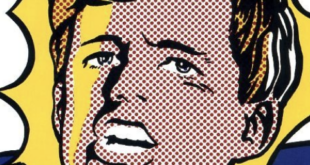
Independently of social distancing being an official policy or not, making people paranoid about coronavirus can result in most people continuing to behave like germophobes for years out of their own accord.
Of course, chances are that governments will continue to listen to the experts, just like they’ve been doing so far, and the experts say that social distancing is likely to be a thing for years.
Many Americans appear to be at odds on when to open up the economy, but if one thing is for sure, we all want the coronavirus pandemic to be over. It has disrupted our days, cost many of us jobs, and taken the lives of thousands of our friends, family, and neighbors. So, how long will the coronavirus be an ever present threat in our lives? According to a new study from the Harvard T.H. Chan School of Public Health, the answer to that question largely depends on how human immunity to the virus develops over the next five years or so.
With this in mind, researchers urge the need for comprehensive research on current population immunity trends. Moreover, is that immunity staying consistent or is it waning?
Working with the data available to them, the research team created a series of modeled projections of virus transmission rates in the future. They concluded that while current social distancing measures should be able to suppress most critical cases and ensure that hospitals aren’t overwhelmed, infections will almost assuredly rise once these restrictions are lifted. They believe social distancing measures will probably have to be intermittently re-applied until 2022.
…
All in all, researchers believe the key factor that will determine how COVID-19 plays itself out over the next five years is how much viral immunity wanes from season to season and year to year. That being said, across virtually all of their simulated scenarios, virus cases always spike up after social distancing measures are removed. This is especially true in the fall and winter; if social distancing measures are loosened due to a drop in summer cases, it could set the stage for a major outbreak come winter time.
Americans are already feeling lonely and we’re not even two months into the whole social distancing thing.
Imagine how it will be after the first year.
Any high-stress situation can take a toll on one’s mental health, and the coronavirus pandemic presents us with some unique hardships that many of us have never faced before. While Americans remain under quarantine, it’s natural to wonder how social distancing is affecting mental health collectively across the country. A new survey of U.S. adults shows that despite feeling uneasy and anxious, many people remain grateful, hopeful and resilient during this extraordinarily difficult time.
…
Also, feelings of loneliness are at the highest they have ever been for 44% of respondents. Loneliness can lead to mental health issues like depression, especially if the COVID-19 lockdown continues for a while. To that end, one in five adults fear they’ll suffer from a serious mental health condition if social distancing measures remain in place for much longer.
Many Americans are feeling overwhelmed, with 56% of people saying that they have more on their plate now than ever before. Nearly seven in 10 respondents (68%) admit they feel like everything is out of their control. This is quite understandable given the amount of uncertainty in everyone’s lives.
Social distancing being a thing until 2022 would mean that lifting the lockdown sooner than that would only result in people going back to work but having virtually no social life. No interaction with others.
That is probably the path we’re looking at now. There will be a soft lockdown lift, where they still maintain many of the measures of the lockdown. Then they will occasionally send out a “virus risk” and send everyone back into lockdown again. Your life will be in a constant state of disruption until something eventually gives.
 Daily Stormer The Most Censored Publication in History
Daily Stormer The Most Censored Publication in History




